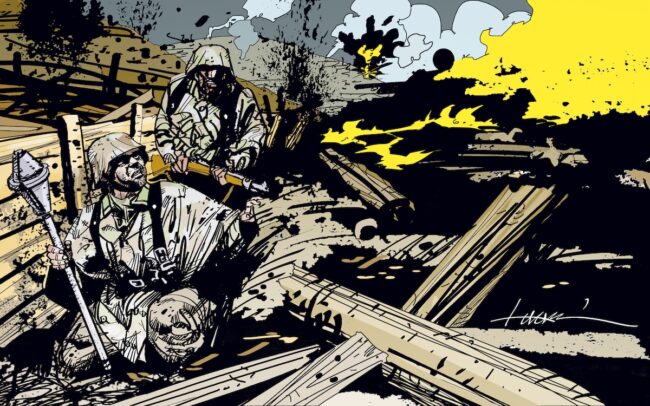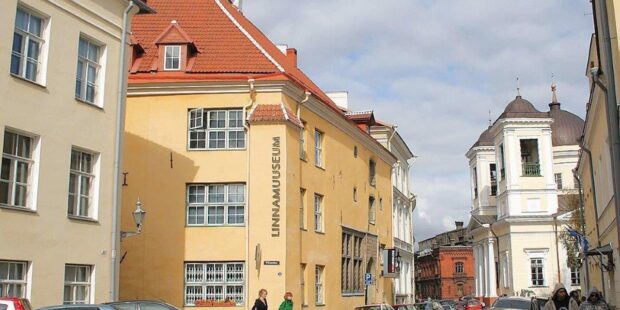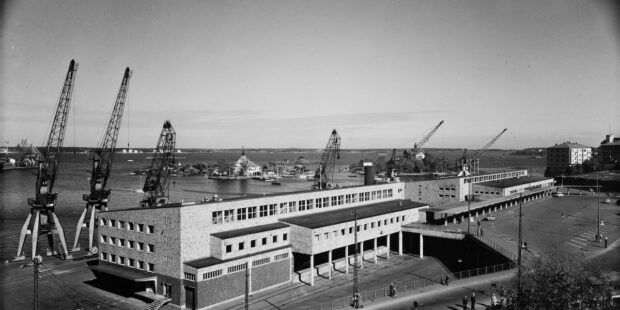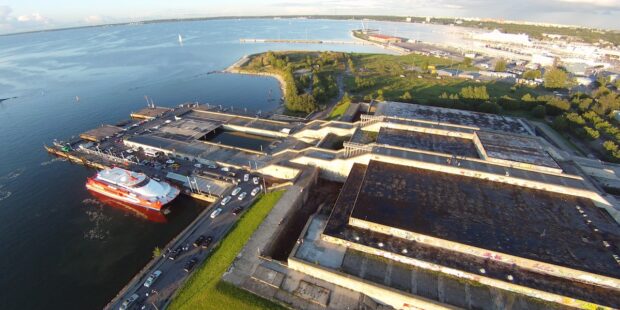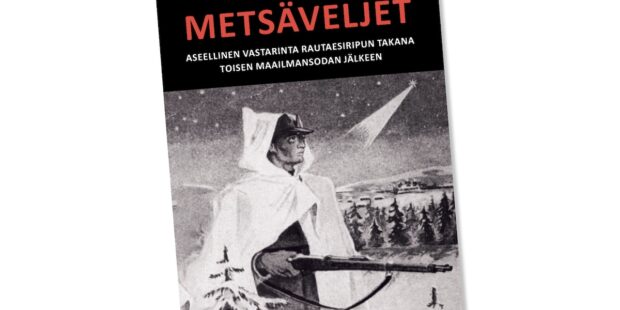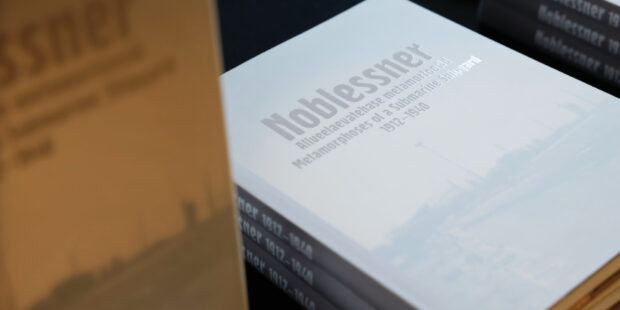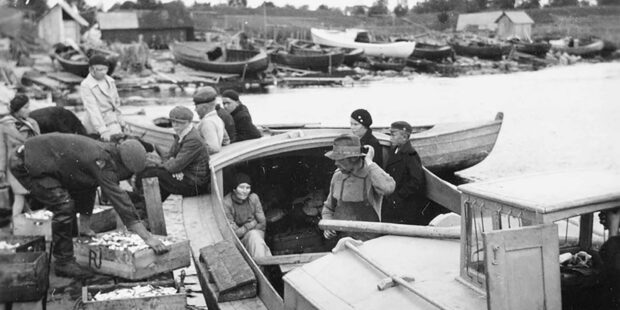Narva: A city that has always been fought over
Text Antti Sarasmo Illustration Archives of The Baltic Guide / Hannu Lukkarinen
In 1697, in the Swedish city of Narva, the Italian Du Thillier stabbed the Englishman Hoyle with his sword. We know this from old court records. Narva appears to have been an international city, as these men were likely not the only foreigners present. Interestingly, the incident occurred at Kehrwieder’s café.
Coffee was once a luxury, imported from Ethiopia via the Arabian trading city of Mokka. It became more widely available when Dutch coffee plantations on the island of Java began producing larger quantities in the latter half of the 17th century.
The first cafés opened in major trading cities: Venice in 1645 and London in 1652. Mainland capitals followed years later, with Berlin’s first café opening in 1721, Paris’ in 1724, and Stockholm’s in 1728. Narva had a café before 1697, indicating it was a city engaged in international trade, as coffee had to be imported all the way from the Netherlands. Narva was a hub for trade with Russia, including luxury goods, which might explain the existence of Kehrwieder’s café.
This trade and commerce also explained Narva’s impressive cityscape. Narva was often called the “Dresden of the North,” though it was much smaller than its German counterpart. The city’s stunning architecture reflected the wealth of its merchants. As the administrative and economic centre of Swedish Ingria, Narva thrived in the second half of the 17th century, a fact that was clearly visible.
The River and the Castle
In the Middle Ages, those who were granted fiefs typically built a castle, around which villages would grow. With luck, these villages could develop into towns or at least marketplaces. Narva’s development followed a different path.
The Narva River is almost navigable, and mediaeval trading vessels, especially those designed for inland waters, were small by today’s standards. These boats travelled the Narva River, but at the current site of Narva, a waterfall blocked the way. Goods had to be unloaded, carried a few hundred metres by land, and then reloaded onto another boat to continue the journey to Peipsi Lake and the grand city of Novgorod.
A village and a fortified settlement for protection against raiders naturally sprang up near the waterfall. With settlements and activity on both sides of the river, a bridge was built, and the road south of the Gulf of Finland became well-traveled. Even in the Iron Age, Narva was a significant crossroads. So important was the location that the Danish conquerors of Northern Estonia replaced the ancient fortress with a more substantial castle.
The original Danish castle, built around 1220 on the east bank of the Narva River opposite the village, was a wooden fort reinforced with stone walls. At some point, this fort was abandoned, and a new one was built on a better site near the village of Narva. During a war with Novgorod, the Danish castle was captured and burned in 1294. However, the site’s strategic importance was such that by 1300, construction of a stone fortress had begun.
Narva quickly grew, receiving its town charter in 1345. While marketplaces were calendar-bound events, town status allowed trade to occur year-round. Narva began to prosper and expand.
A Border Town
In 1478, the rising Principality of Moscow conquered Novgorod, becoming the entity we now call Russia. Russia’s western border naturally followed the waterways of Peipsi Lake and the Narva River. In 1492, the Russians built the Ivangorod Fortress on the east bank of the river, making the view of the Narva River fortresses a symbol of the border between East and West—a view that even appeared on Estonian five-kroon banknotes.
Wars were frequent in those days. A series of wars lasting about a century ended when Gustavus Adolphus of Sweden conquered Livonia, bringing about nearly a century of peace. Administration of the southern Gulf of Finland, the Käkisalmi County, and other new territories outside Vyborg County was centralised in Narva. The town was no longer just a border outpost; it was an administrative hub.
A massive fire in 1659 destroyed much of the city, prompting the creation of a new urban plan. The reconstruction took 20 years, resulting in a magnificent and unique baroque city.
The Great Northern War
Good times and peaceful years came to an end with the Great Northern War (1700–1721), during which the Swedish Empire collapsed. Narva was caught up in the conflict. Charles XII of Sweden’s most famous victory occurred in 1700 when he defeated a large Russian army besieging Narva. After Charles moved his forces to Poland, the Russians made another attempt, capturing Narva in 1704.
Under the Treaty of Nystad, Russia acquired all of Livonia and Ingria from Sweden. Narva became a city within the Russian Empire. It was no longer an administrative centre and had lost much of its military significance, now serving as a provincial hub known for its impressive architecture.
Narva in Wars
Narva industrialised in the 19th century. The river provided power, and significant industries like the Krenholm Manufacturing Company were established. The city also expanded across the river, with a new suburb developing in Ivangorod.
When the Estonian War of Independence began in November 1918, Narva was the first city captured by the Reds. The declaration of the “Estonian Workers’ Commune” was read from the balcony of the Town Hall. However, this is a bit of revolutionary embellishment—the declaration was actually read from a more modest location. The embellished story helped save Narva’s Town Hall in the 1950s.
The tide of war turned, and Narva was liberated in January 1919 by Finnish volunteers from the Ekström Battalion, who had landed at Narva-Jõesuu and advanced on the city. However, the first troops to reach the town centre were a cavalry unit composed of Estonian schoolboys. Thus, Estonians liberated their important city themselves, though the Finnish role is always remembered in accounts of the War of Independence and Narva.
During World War II, Narva suffered greatly. After the Germans retreated from the Siege of Leningrad in 1944, they established a new defensive line along the Narva River. The defence held for some time, but the Russian artillery eventually reduced Narva to ruins. The river was crossed, and the battle moved to the Sinimäed Hills, the only elevated area on the North Estonian Plain.
Narva’s residents had been evacuated before the battles, but they were not allowed to return after the war. The city’s industry was restarted as quickly as possible, and workers were brought in from other parts of the Soviet Union. Simultaneously, Narva’s past was being erased. The castle was left standing, but the war-damaged baroque city was demolished and replaced with prefabricated buildings. The familiar city of Narva simply disappeared—except for the Town Hall, a revolutionary relic.
For native Narvans interested in their hometown’s history, the true story beneath the surface belongs to another people and another culture.
To learn more about this and similar topicsBaltic History East-West Border Estonian Culture Great Northen War in Estonia Narva Narva History Soviet era

